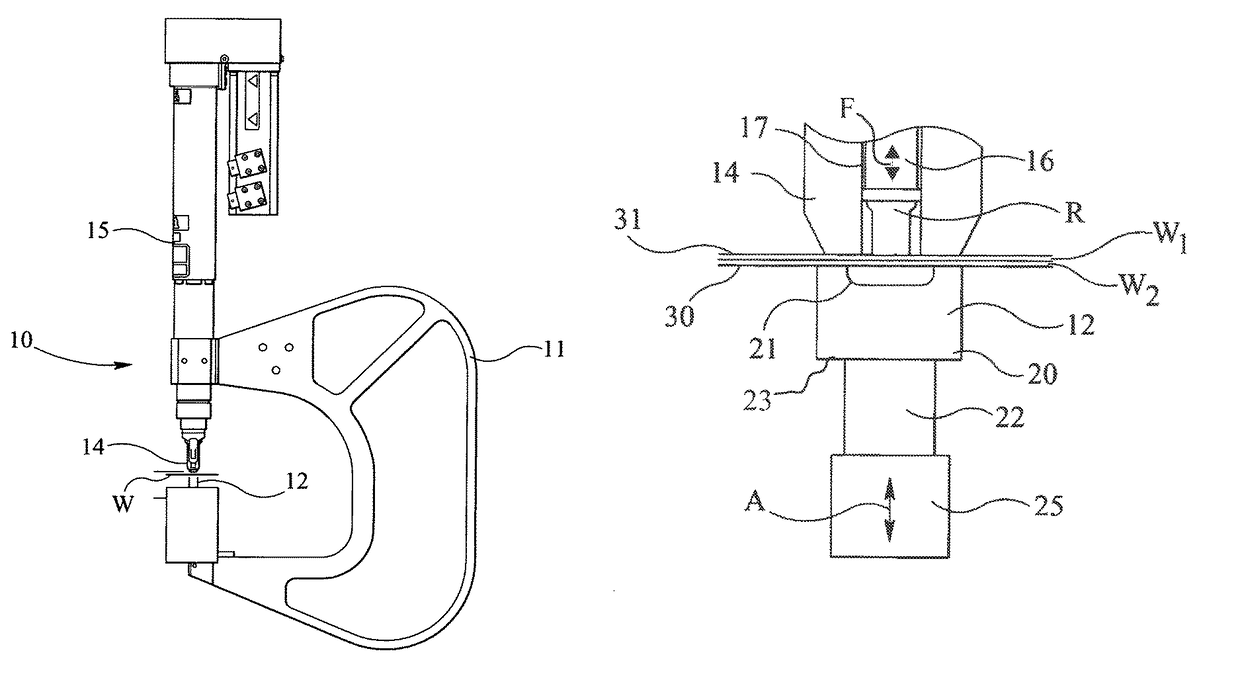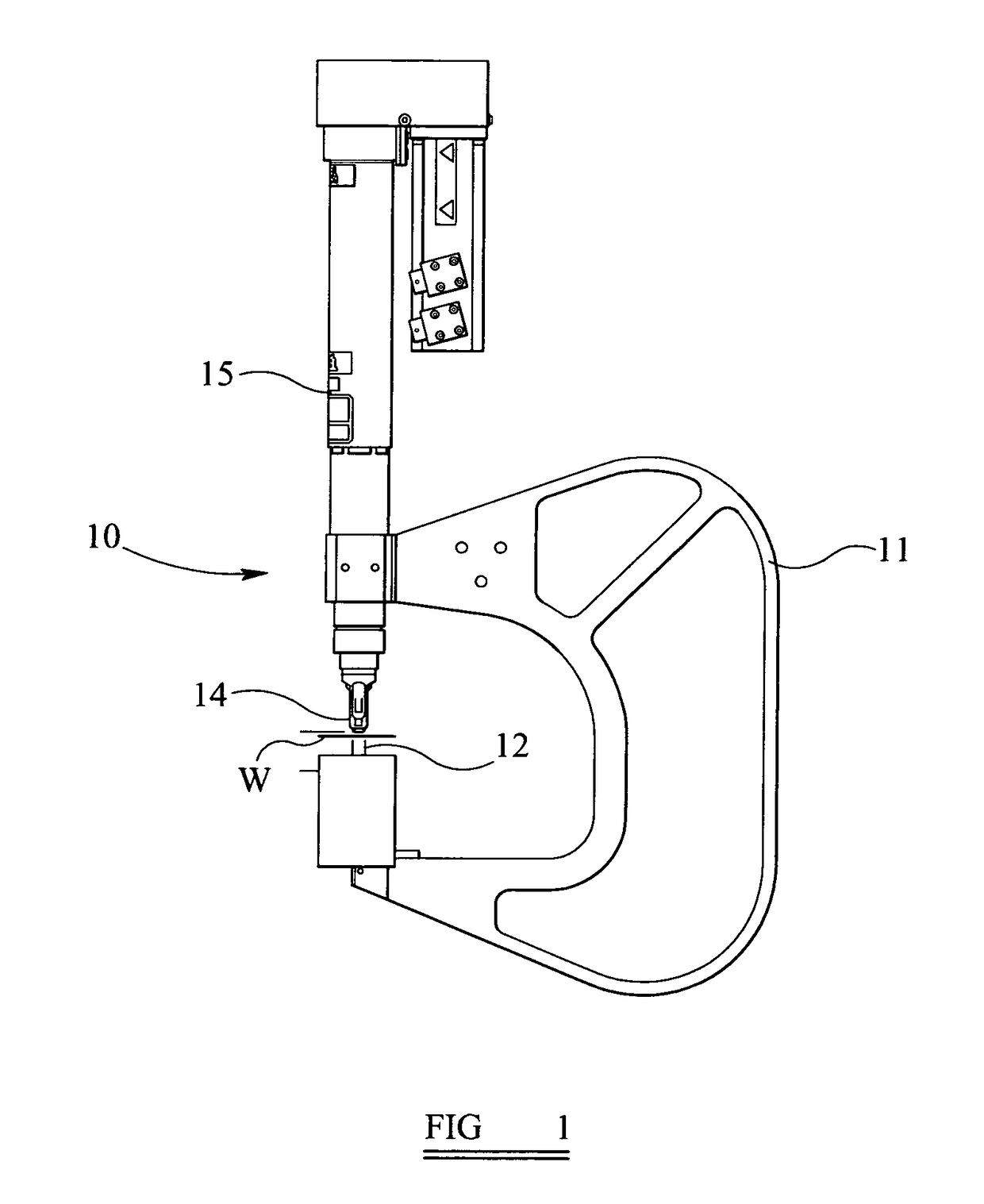Joining apparatus and method
a technology of joining apparatus and components, applied in metal-working apparatus, metal-working apparatus, manufacturing tools, etc., can solve the problems of increasing demands, reducing ductility, and prone to fracture,
- Summary
- Abstract
- Description
- Claims
- Application Information
AI Technical Summary
Benefits of technology
Problems solved by technology
Method used
Image
Examples
Embodiment Construction
[0036]Referring now to FIGS. 1 and 2 of the drawings, a rivet setting tool 10 is mounted on an upper arm of conventional C-frame 11 above a rivet-upsetting die 12 supported in the lower arm. Self-piercing rivets R (one shown in FIG. 2 only) are inserted by the tool 10 into workpieces W (FIG. 2) supported over the die 12 as is well known in the art. It is to be appreciated that whilst the specific embodiment described herein relates to the feeding and insertion of rivets it has application to other fasteners that are inserted into workpieces using a die such as, for example, slugs.
[0037]The C-frame 11 is mounted on a robot manipulator (not shown) such that it is movable with the tool 10 by the robot towards and away from the workpieces W as required. Feed apparatus (not shown) alongside the C-frame 11 is designed to supply rivets R to the setting tool 10 in a predetermined and controllable fashion from a bulk source. This may be achieved, by for example, using tape feed or a compress...
PUM
| Property | Measurement | Unit |
|---|---|---|
| frequency | aaaaa | aaaaa |
| ultimate tensile strength | aaaaa | aaaaa |
| ultrasonic frequency | aaaaa | aaaaa |
Abstract
Description
Claims
Application Information
 Login to View More
Login to View More - R&D
- Intellectual Property
- Life Sciences
- Materials
- Tech Scout
- Unparalleled Data Quality
- Higher Quality Content
- 60% Fewer Hallucinations
Browse by: Latest US Patents, China's latest patents, Technical Efficacy Thesaurus, Application Domain, Technology Topic, Popular Technical Reports.
© 2025 PatSnap. All rights reserved.Legal|Privacy policy|Modern Slavery Act Transparency Statement|Sitemap|About US| Contact US: help@patsnap.com



